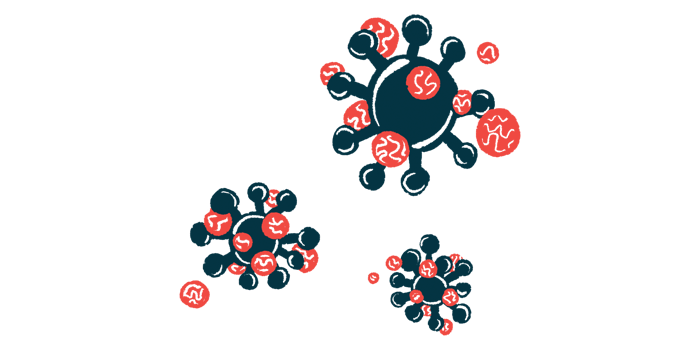Enterovirus 71 Triggers Anemia in Young Boy
CAD-related case report about an 11-year-old may be a first
Written by |

An enterovirus infection triggered autoimmune hemolytic anemia (AIHA) — a condition in which the body’s immune system generates self-reactive antibodies that destroy red blood cells — in an 11-year-old boy, a case study has reported for the first time.
Although some signs were consistent with a case of virus-induced cold agglutinin disease (CAD), which is a type of AIHA, researchers noted that a direct test for CAD-related self-reactive antibodies was not performed to confirm the diagnosis.
Enterovirus infection should be considered as a potential cause of AIHA in any patients presenting with hemolytic anemia, they added.
The case study, “Enterovirus 71-Induced Autoimmune Hemolytic Anemia in a Boy,” was published in the journal Clinical Medicine Insights: Case Reports.
CAD is a type of AIHA, a broad category of diseases in which the immune system wrongly targets and destroys red blood cells. In CAD, this attack is driven by self-reactive antibodies called cold agglutinins that bind to red blood cells at low temperatures.
AIHA can be triggered by underlying health conditions, such as a viral or bacterial infection, cancer, or other autoimmune disorders. Cases caused by enteroviruses are rare, and cases of the subtype enterovirus 71 (EV71) have not yet been reported.
For the first time, researchers in Thailand described the case of an EV71 infection causing AIHA in an otherwise healthy 11-year-old boy.
The boy presented with a high fever and swelling in his neck for two days and dark-colored urine for one day. He had no cough, loose stools, rash, arthritis, urination difficulties, abnormal bleeding, and had received no vaccinations in the previous month. He was above average weight and height for his age, fully conscious, with moderate skin paleness and yellowish eyes. Swollen and tender lymph nodes in his neck were noted upon examination.
His liver, heart, lungs, and nervous system appeared normal, and he had no history of jaundice or low red blood cell counts (anemia). He reported no medication use before symptom onset, and there was no evidence of a family history of any underlying blood diseases.
His bloodstream level of hemoglobin, the protein that carries oxygen in red blood cells, was 7 grams per deciliter (g/dL) — way under the normal range of 11.2 to 14.5 g/dL.
The percentage by volume of red cells in his blood (hematocrit) was 20.9%, also below the normal range of 30–44%. In contrast, his level of immature red blood cells, called reticulocytes, was slightly elevated (3.4%), suggesting red blood cell depletion after maturation. His white blood cells also were elevated, indicating infection.
Blood levels of LDH and bilirubin were high, whereas haptoglobin was low, all signs of red blood cells being destroyed. Liver function markers ALP and AST also were elevated, a sign of liver inflammation and damage, potentially caused by the abnormal clearance of excess damaged red blood cells.
Blood smear analysis showed some small, spherical red blood cells, some with different colors, but no red blood cell fragments or signs of red blood cell clumping. Urinalysis showed dark urine with protein, which tested positive for red blood cells
“This indicated hemoglobinuria [high hemoglobin levels in the urine] supporting the evidence of intravascular hemolysis [red blood cells destruction],” the researchers wrote.
AIHA was diagnosed based on a positive direct Coombs test for self-reactive antibodies targeting red blood cells.
The boy was screened first for various infectious diseases to identify the potential cause of his AIHA. Genetic screening of a nasal swab tested positive for enterovirus, and more tests found elevated blood levels of antibodies against EV71.
Treatment strategy
He was treated with the oral anti-inflammatory steroid prednisone, given a blood transfusion, intravenous (into-the-vein) hydration, and other supportive treatments. Within a day, his fever subsided, and his hemoglobin levels and reticulocyte counts normalized 35 days after presentation.
Prednisolone was continued and gradually tapered to complete a 10-week regimen, at which time his hemoglobin, reticulocyte, and LDH were normal, and he tested negative on the Coombs test.
“This reported case demonstrate the association of EV71 infection and AIHA in a previously healthy young child,” the researchers wrote. “EV71 should be considered as another possible cause of virus-induced AIHA in any patients presenting with hemolytic anemia, especially during the season of EV71 outbreak.”





